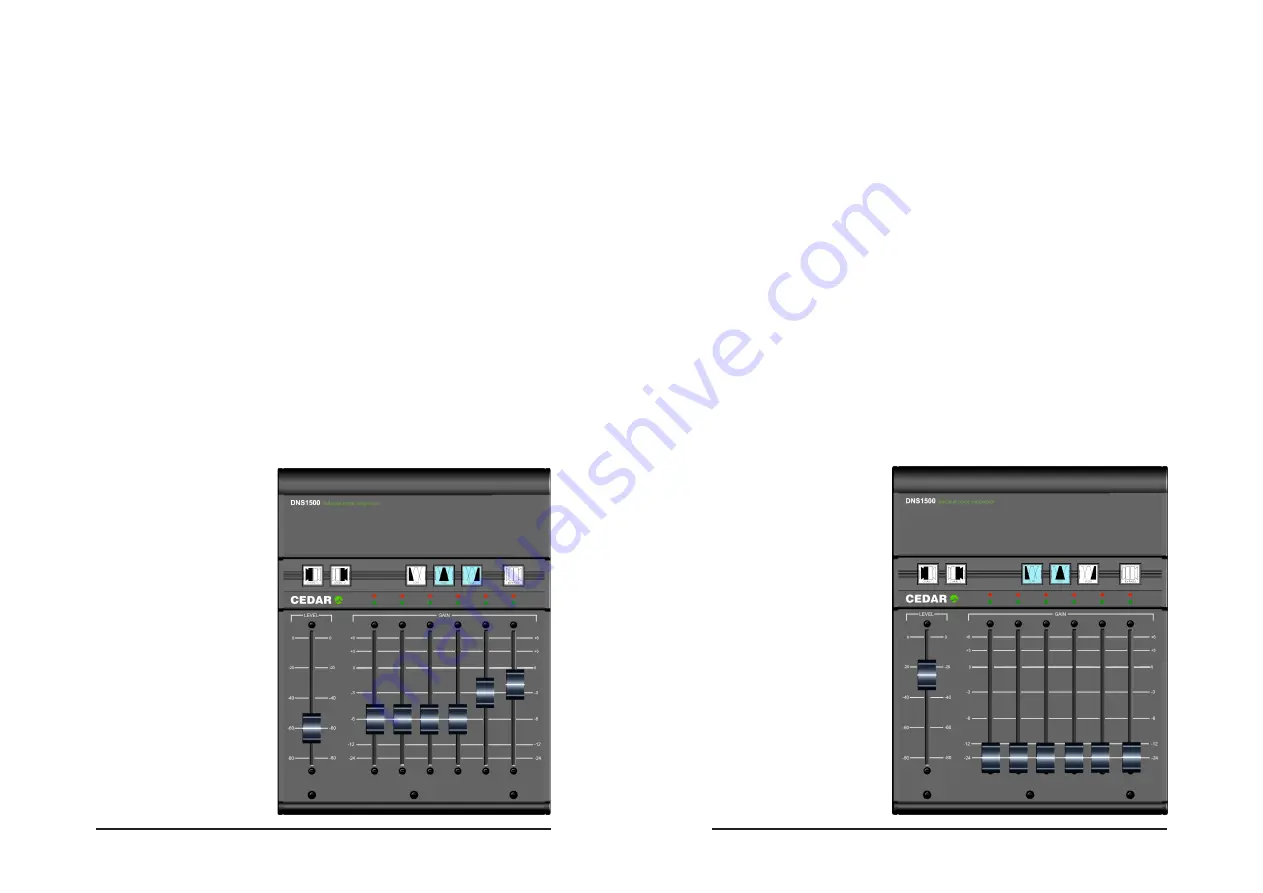
Page 14
Page 15
2.
SUPPRESSING TAPE HISS
The DNS1500 can suppress the tape hiss that mars many older recordings. It will
also improve the signal/noise ratio of dialogue tapes that have been poorly
copied as well as those that are many generations old.
First, identify the frequency range(s) in which the noise lies.
You should follow the procedure laid down in case 1 to determine the range(s) in
which the problem lies. For most instances of tape hiss, you will find that the
Mid+High ranges are most appropriate. In a few cases you may find that the
High range alone is most suitable. It is not as common to require suppression in
the Low range because hiss is usually less prominent at lower frequencies, and it
may also be masked by the genuine audio in the range.
Second, optimise the Level control.
To determine the correct Level, you should again follow the procedure described
in case 1.
Third, refine the Band Gain controls for optimum suppression.
As in case 1, you should start with all six Band Gain controls at 0dB. You should
then increase and decrease each control individually to find the bands that
contribute most hiss to the signal. Because tape hiss often exhibits a “white”
profile at Mid and High frequencies, you may find that satisfactory results are
achieved with the Band Gain controls set in a horizontal line.
However, hiss is generally
less annoying at very high
audio frequencies.
Consequently, you may be
able to reduce the amount of
processing in the uppermost
bands. This will help to
ensure that any low
amplitude signal components
lying at high frequencies
(which provide much of the
“air”, “ambience” or “life” in a
signal) are passed with little
or no attenuation.
The final configuration may
look like this:
3.
SUPPRESSING EXCESSIVE REVERBERATION
In many situations, the DNS1500 can suppress excessive reverberation. This can
be useful in TV production when you need to match the audio from a large
recording studio or soundstage to visual images set in a small room or other
enclosed space. Suppressing reverberation can also be beneficial in increasing
the intelligibility of poor dialogue recordings.
The method used to suppress reverberation is quite different from that applied in
cases 1 and 2, and is as follows:
First, set the range in which the reverberation lies.
In general, reverberant spaces include soft materials that absorb high
frequencies more rapidly than middle and lower frequencies. Even bare rooms
with hard walls include these materials: they are the actors.
Consequently, you will find that Low+Mid is almost always the most appropriate
combination of ranges for suppressing reverberation.
Second, set the Band Gain controls.
You should set all six Band Gain controls to -24dB. This will ensure that (provided
the other controls are set correctly) the DNS1500 processes the “tails” of the
sound without adversely affecting the desired signal.
Third, optimise the Level control.
Starting at its minimum
position (-80dB) increase the
Level control slowly. At some
point before full noise
suppression becomes
apparent, you will hear the
tails of louder sounds
become truncated.
You can adjust the amount of
truncation of the reverb
using the Level control rather
than the Band Gain controls.
The final configuration may
look like this:




















